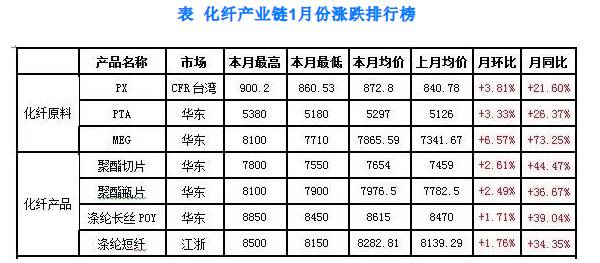2016/2017, China's cotton production is expected to continue to decline, while consumption is expected to moderate increase in the year to further expand the supply gap, cotton prices will further upward.
Global ending stocks declined again
January US farmers report, 2016/2017 annual global cotton production was once again raised 240,000 tons. The index has been raised for five consecutive months. Among them, China's cotton production increased 220,000 tons, which is expected in the 6 months after the first increase in production data unchanged; US cotton production increased 90,000 tons. At the same time, global cotton consumption down 3 million tons, mainly due to India's consumption is expected to decline.
Yarn production growth picked up
According to the National Bureau of Statistics data, in January-December 2016, China's yarn production of 42.418 million tons, an increase of 1.943 million tons, the growth rate of 4.8% over the same period in 2015 increased by 1 percentage point. China's yarn production growth after 2013,2014,2015 for three consecutive years of decline in 2016 after the rebound.
Cotton price ratio has declined
With the implementation of cotton direct subsidy policy, the domestic cotton prices fell sharply, cotton prices fell, or even inverted phenomenon. 2016 year-to-date, cotton daily average price of 0.9387, compared with the same period in 2015 decreased 0.0982 over the same period in 2014 fell 0.492. At the same time, cotton price fluctuations in the normal range, there is no obvious trend of change. Cotton sticky price lower, slowing down the chemical fiber substitution rate of cotton, is conducive to the promotion of domestic cotton consumption.
Textile finished goods inventory decreased
As of December 2016, China's textile and apparel retail sales of 1.4433 trillion yuan, an increase of 7%, an increase over the same period in 2015 decreased by 0.29 percentage points, the decline over the same period in 2015 convergence 2.44 percentage points. Before 2013, China's textile and garment retail sales growth in a period of rapid growth, year on year increase of more than 20%. In 2013, the increase began to decline. By 2015, the increase will drop to less than 10%.
Terminal exit slowdown
According to the latest data of the General Administration of Customs, China's textile and apparel exports totaled US $ 267.235 billion in the first 12 months of 2016, down by US $ 16.665 billion compared with the same period in 2015, representing a decrease of 0.98 percentage point over the same period in 2015, to 5.87%. Exports of textile yarn, fabrics and products amounted to US $ 106.217 billion, down by 3.04% year-on-year, down by 0.69 percentage point over the same period in 2015. Exports of clothing and accessories were US $ 161.018 billion, down by 7.65% year-on-year, Percentage points. End product from the domestic and international sales data, China's textile industry downstream consumption slightly warmer.
Source: Futures Daily
Many people in the industry have this view, buy that is earned in 2016, some people show that the 2016 chemical fiber products soaring or just 2017 more crazy "foreplay"! Indeed, according to the current indications that the 2017 part of the price of chemical fiber products or to scale new heights! Let's take a look.
The current textile export situation has not improved, but the devaluation of the renminbi, "along the way" construction under the influence of 2017 textile export pressures will continue to be eased. At the same time, China's vigorously implement the supply side of the strategic background of reform, the traditional textile manufacturing industry will gradually go to production capacity, the textile industry to accelerate the pace of structural adjustment. Therefore, the long-term fundamentals for the good has not changed, 2017 textile market conditions still exist in the imagination.
For 2017, the "mad cow" will become a "slow cow" is more likely that the textile industry in 2017 will show a "first fall then go down" situation. And into 2017, in crude oil supply and demand to accelerate the balance of the impetus, the cost side of the chemical fiber market is expected to promote the good. Its own production capacity will also focus on "chemical fiber industry," thirteen "development guidance" in accordance with the law eliminate backward production capacity, speed up the elimination of excess capacity.
Therefore, the chemical fiber market in the current environment to enhance the environment, 2017 is expected to continue the current price trend, the industry into the uplink cycle.
January broad based market, February fear will continue

January 2017, the chemical fiber industry chain market gains, the international crude oil market is expected during the month of preference, to a certain extent to support the cost of polyester raw materials PTA, boosted by this, the polyester market is optimistic, but near the Spring Festival holiday, part of the terminal The factory continued delisting, the overall turnover of the general situation, according to statistics, the average polyester filament production and sales in 78.5%; staple average production and sales maintained at 45%.
From the chemical fiber industry chain up and down the product statistics, as shown in the month, the polyester industry chain collective rise, from the same period of data can be seen, MEG year-on-year increase the most, or 73.25%, minimum PX, Or 21.60 percent increase.
Festival after the return of the king, the market will usher in a full set of "good start"
Recently, the market of chemical fiber industry chain is running strong. Although the terminal weaving factory parking holiday, the demand has slowed down significantly, but the overall market volatility is not obvious, and with the return of postganglionic demand slow recovery, the market or will usher in " . The following is the outlook for the products:
PX:
Expected in February 2017 Asia PX market remained strong, during the Spring Festival PTA operating rate is still high, the demand for raw materials PX good, and after the Spring Festival holiday, the terminal polyester demand will be quickly restored by the two sets of PX devices in Japan and South Korea due to fire accidents Stop business, there are still fried up emotions, in addition to 2 quarter of the Asian PX device maintenance is very concentrated, significantly reduced supply expectations continue to boost market sentiment. On the whole, February Asia PX market will remain strong.
PTA:
Is expected in February 2017 PTA market or the strong trend of shocks. The current domestic PTA futures more follow the external fluctuations in commodities, from the technical side can be seen, 5400 yuan mark to support a solid, long-term perspective to see PTA futures market or there is room for growth, but short-term or within a narrow range of shock-based, multi- Market, so in the case of slowing demand around the Spring Festival, the market is expected or shock-based, with the Spring Festival, the polyester plant gradually return to work, the market does not rule out a "good start" trend.
MEG:
In February the domestic integrated device is running stable, coal ethylene glycol plant starts load is expected to increase, but the foreign multi-sets of equipment in February for annual maintenance, the overall supply side is tight. Demand, in mid-February, polyester operating rate will steadily increase, the demand for the continuation of a strong situation. According to the data, the shipments during the Spring Festival by the holiday season factors, but less expected to Hong Kong, the overall inventory will remain low. With the steady increase in downstream demand for polyester, combined with limited raw material inventory of polyester plant, it is predicted that in February 2017 ethylene glycol market will show a strong trend of shocks.
Polyester PET:
Polyester PET market is expected in February or stronger finishing. From the cost perspective, in February, raw material PTA futures market or there is room for growth, coupled with the return after the holiday, downstream demand or steady growth, is expected to PTA market or shocks strong. From the supply and demand side, during the Spring Festival, polyester PET plant maintenance by device, inventory control in a reasonable range, combined with the restart after the holiday device, concentrated in early February, is expected to normal products to 2 months late, the market supply Increase or limited, but the preganglionic downstream stocking is not sufficient, after the holiday return, the downstream beverage companies and slice spinning enterprises gradually return to work, raw materials procurement initiative or growth.
Polyester fiber:
Expected, in February polyester fiber market or will appear stable partial strong pattern. From the cost side, short-term polyester raw materials PTA market will run more strong shocks, the cost of good market. Supply and demand side, after the Spring Festival, polyester fiber plant maintenance equipment will be restarted, the supply side of the bad market, but at the same time, postganglionic downstream end weaving enterprises buying enthusiasm will rebound, the demand side good market, Polyester fiber market in February is expected to more stable in the strong side to run.
From:xinhua



